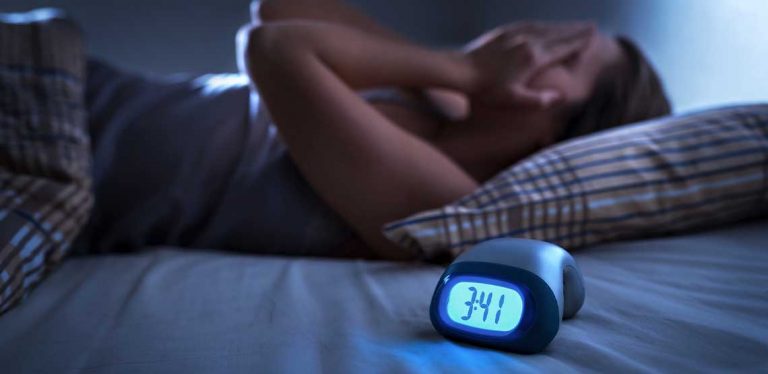REM Sleep Behavior Disorder
About 20% of your sleep is spent in REM (rapid eye movement). This is the usual time for dreaming, which occurs primarily during the second half of the night. It is a normal stage of sleep that should not involve any form of movement.
What is REM Sleep Behavior Disorder?
REM sleep involves temporary paralysis of the muscles of the body, but the brain remains active while you dream throughout the night.
However, REM sleep behavior disorder, which occurs during REM sleep, is a type of disorder in which a person acts out their dreams. This is usually accompanied with vocal sounds and sudden, potentially violent arm and leg movements.
In most cases, dreams associated with REM sleep behavior disorder are often intense and frightening. Individuals may dream about being chased or attacked, and they can unknowingly enact the dream in real life; this is why it is sometimes called dream-enacting behavior.
How Does the Disorder Progress?
The onset of REM sleep behavior disorder is often gradual and may get worse with time if it is not properly attended to. Also, there is a risk that this disorder can be connected to neurological conditions, such as Lewy body dementia, Parkinson's disease or multiple system atrophy. Less than 1% of people are estimated to have REM sleep behavior disorder and it usually begins after age 50. However, this disorder can occur in children where certain risk factors come into play, but this is rare.
What Causes REM Sleep Behavior Disorder?
People who have REM sleep behavior disorder do not experience paralysis during REM sleep. Instead, their body remains active, which can cause outbursts during sleep.
The causes of REM sleep disorder are not exactly known, but research shows that it can be attributed to certain neural pathways in the brain which inhibit muscle activity during REM sleep. This disruption is what leads to temporary paralysis of your body when sleeping. This disorder occurs when these neural pathways stop working, making it possible for you to physically act out your dreams.
Risk Factors
Research shows that certain risk factors are associated with this disorder. Some of these factors include:
- Being male
- Being over 50 years old
- Having an existing neurological disorder
- Having narcolepsy
- Using certain medications or antidepressants
- Using or withdrawing from drugs or alcohol
- Certain environmental risk factors, like sleep deprivation, smoking, head injury, and exposure to pesticides.
What Are the Symptoms?
The onset may be sudden or gradual. However, the symptoms may get worse with time. If you are experiencing symptoms, it is advised that you seek medical treatment as soon as possible to prevent the risk of injury to yourself or your partner
Related Search Topics (Ads)
The symptoms of REM sleep behavior disorder include:
- Twitches of the muscles
- Talking quietly in your sleep
- Loud or violent shouts
- Punches, kicks, grips, or even jumping out of the bed
These symptoms usually arise later in a sleep period and can occur once or multiple times during the night. You might also experience these symptoms a few times per year or every night. Because you are asleep when symptoms occur, many people do not realize they have it. Often, spouses will tell their partners about their symptoms.
Treatment and Management Plans
It’s recommended to talk to your doctor if you experience the symptoms mentioned above. The treatment for REM sleep behavior disorder may be handled differently depending on the individual involved. The condition is usually managed by a combination of lifestyle changes, medication, and injury prevention techniques.
Avoiding Triggers
Making lifestyle changes to reduce or eliminate the use of substances that trigger the condition may be part of a person’s treatment. For example, individuals are usually advised to avoid the use of certain alcohol or prescription drugs that can contribute to REM sleep behavior disorder.
Lifestyle changes can also involve taking steps to improve sleep hygiene, such as setting a consistent sleep schedule that normalizes sleep and promotes sleep quality.
Medications
A number of medications may be used to manage the condition, but melatonin is usually the most preferred medication for REM sleep behavior disorder because it is efficient and has fewer side effects than other medication options. This option is much safer for the elderly and people who suffer from dementia or sleep apnea.
Some of the few side effects of the medication includes sleepiness, forgetfulness, and impaired balance in the morning. However, depending on your symptoms and the severity of your condition, consult your doctor for the ideal medication and advice on a suitable treatment plan.
Injury Prevention Techniques
If you are suffering from this disorder, it is advisable that you maintain a safe sleep environment to avoid your risk of injury. Reports show that about 30% to 81% of individuals with REM sleep behavior disorder suffer from injuries like bruises, cuts, and head trauma.
In addition, your partner is also at risk for injury when they are sleeping next to someone who unknowingly acts out violent dreams. The following are some safety measures you can try:
- Take away sharp objects and weapons from the sleeping area
- Pad the floor and bed rails around your bed
- Put the mattress on the floor to avoid severe falls
- Move furniture and other similar objects away from the bed
- Protect bedroom windows by adding padding
- In very severe cases, bed partners are advised to sleep separate beds until symptoms are well treated

